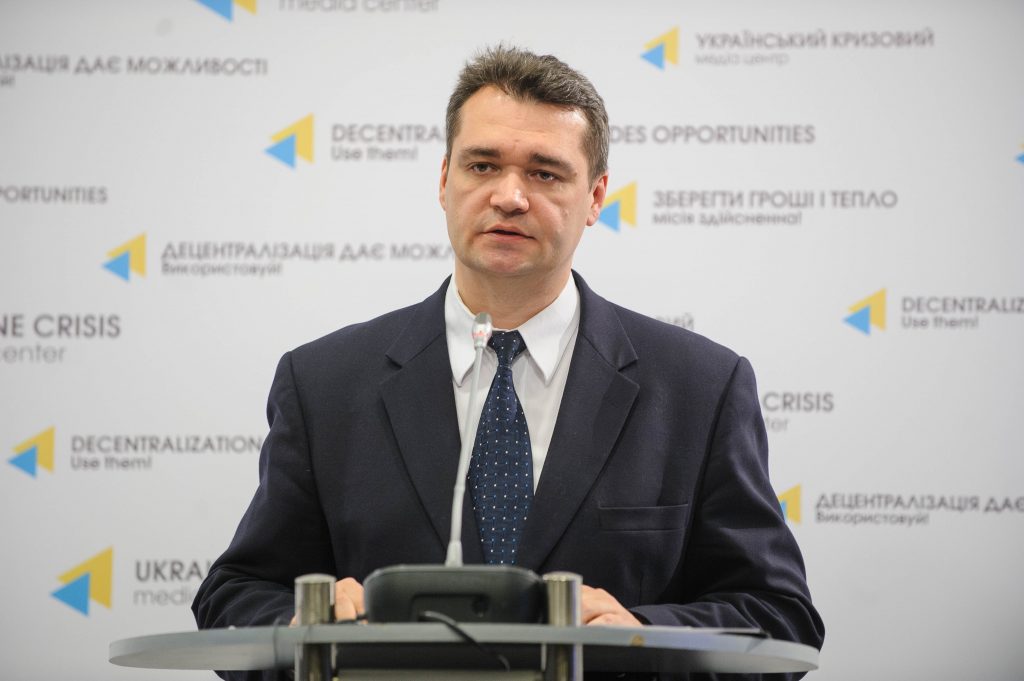The number of ceasefire violations ranged between 61 on Tuesday, January 17, at the highest point and 19 on Thursday, January 19, at the lowest.
“The previous week was marked with hostilities of low and middle intensity all across the frontline. Russia-backed militants reduced the number of heavy weapons use in all three sectors”, stated Vilyen Pidgornyy, Ministry of Defense spokesperson at a press briefing at Ukraine Crisis Media Center. In addition, not a single instance of artillery action by proxy forces was recorded during the week. At the same time, enemy snipers were active almost every day along the entire frontline – overall, 12 cases of enemy cease-fire violations with sniper fire were recorded in the ATO area last week.
Luhansk sector
In the Luhansk sector, all enemy fire attacks against ATO forces took place in Popasna and Stanytsia Luhanska districts. Additionally, the militants used mortars in Popasna district. The heaviest enemy fire in this area took place on Tuesday and Wednesday January 17 and 18, respectively. During those two days the militants fired at Ukrainian positions over 60 mortar bombs in total.
Donetsk sector
In the Donetsk sector, militants significantly reduced their combat activity. “Major hostilities remained in Avdiyivka industrial area where enemy fire against ATO forces lasted from one to five hours daily. Mortars were used there by the enemy only on Monday, January 16”, Mr. Pidgornyy said. Occasionally, during the week, Russian proxies violated cease-fire regime at Svitlodarsk, without using heavy weapons. Other enemy violations of a truce in the Donetsk sector took place at the occupied Horlivka perimeter and areas close to the Donetsk airport. There, enemy used heavy weapons only once, having shelled positions of Ukrainian troops near the village of Pisky with 82-mm mortars yesterday, January 22.
Mariupol sector
In the Mariupol sector, military confrontation took place in Maryinka-Krasnohorivka area and in the frontline area close to the Azov Sea. The vast majority of fire episodes by the enemy took place in the southern coastal part of the sector. Ukrainian positions in Hnutove, Vodiane and Shyrokyne were shelled by the enemy regularly day after day. Eighty percent of all attacks in the Mariupol sector accounted mainly for these spots, where Russian proxies largely used small arms and, occasionally, mortars. Most intensive enemy shelling of Ukrainian positions occurred on January 18 near Talakivka – throughout 30 minutes militants fired at Ukrainian troops positions about 30 mortar bombs of 82 caliber.
Over the week, Ukrainian troops registered 13 episodes of enemy drones performing aerial reconnaissance. Ukrainian military intelligence confirmed areas of UAVs launches: adjacent area of Shchastya-Slovianoserbsk, Luhanske village at Svitlodarsk area, Horlivka perimeter, territory to the west of Donetsk and Shyrokyne.
Casualties
Last week, 1 Ukrainian serviceman was killed in action and 8 servicemen were wounded in action. This includes two wounded as a result of booby trap explosion. On Tuesday, Thursday and Saturday, Ukrainian Armed Forces did not incur any casualties. “On January 17, a civilian was killed as a result of militants` shelling of residential areas of Zolote. In addition to this, on January 20, militants shelled a bus near Olenivka village which is in the temporarily occupied by militants territory of so-called “DPR”. As a result of shelling, a local woman was injured”, MOD spokesperson added.
Damage to the civilian infrastructure
Two private homes were damaged as a result of militant attacks in Pivdenne village and Avdiyivka, which are in the Donetsk sector. In addition to this, infrastructure damages due to militants` fire attacks included farm household premises in recently liberated Novoluhanske village, gas pipeline in Luhanske at Svitlodarsk and ten electric system facilities in several localities in the Donetsk region.
Report on the military developments as of the previous week is available here, as of January 23 is available here. Interactive data on the shelling: chronology shelling chart and the interactive map.

